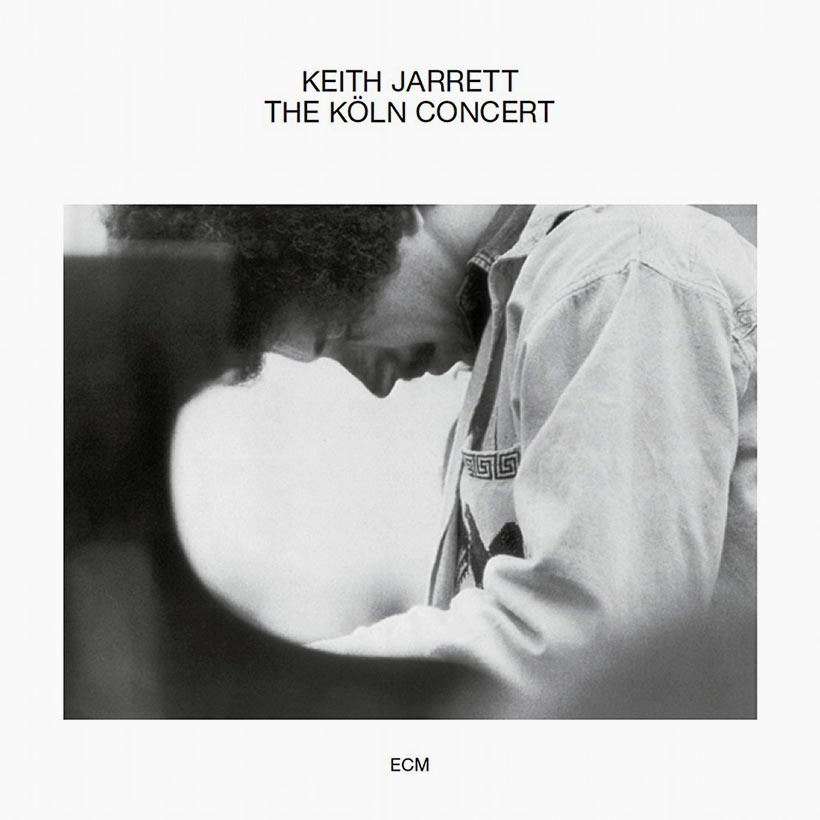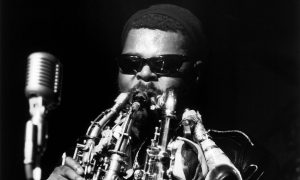January 24, 1975, proved a memorable, magical night for the 1,300 people that witnessed American jazz pianist Keith Jarrett perform a solo recital in the majestic surroundings of Cologne’s opera house. Fortunately, the concert was recorded for posterity by ECM Records, who released the recording later that year as a double-album housed in stylish black-and-white artwork adorned with a picture of an Afro-topped Jarrett hunched over the piano. Though The Köln Concert quickly went on to become regarded as a classic and amassed sales of four million (to date, it’s still the best-selling piano album of all time), remarkably, the concert almost never happened.
Listen to The Köln Concert on Apple Music and Spotify.
A young German student and part-time promoter called Vera Brandes – an avid jazz fan who was just 17 at the time – was responsible for organizing the concert and, at Jarrett’s request, had arranged for a Bösendorfer 290 Imperial concert grand piano to be provided for the show. Unfortunately, the opera house staff wheeled out the wrong piano – a much smaller Bösendorfer baby grand. To make matters worse, it was a piano used for opera rehearsals and was in abject condition and badly out of tune.
For a renowned perfectionist such as Jarrett, who was fastidious about his pianos and possessed perfect pitch, the instrument was an abomination. When he was given the news that there was no time to get a replacement piano, Jarrett threatened to cancel the show. Making matters worse, Jarrett was not in good shape. He had been suffering from excruciating back pain for several days, a result of which was a run of sleepless nights. To cap it all, his condition was exacerbated by the exhausting five-hour, 350-mile drive he made to Cologne from a concert he’d given in Zurich. Given that situation, it was no wonder that the pianist was ready to call it a day.
Thankfully, Vera Brandes refused to give in and managed to cajole and pacify the pianist while technicians spent several hours trying to make the piano playable and sound halfway decent – at least to an untrained ear. They managed to tune it, though couldn’t do much to improve its tone and timbre, which was defined by jangly high notes and a less than resonant bass register. And if Keith Jarrett thought that was bad enough, he had to contend with malfunctioning sustain pedals.
Even so, the pianist – wearing a back brace to give him extra spinal support – eventually went out on stage at 11.30pm (the concert followed in the wake of an opera performance) and battled through pain and exhaustion to give one of his most memorable concerts ever.
The Köln Concert begins with a 26-minute improvised piece – which filled up Side One of the original vinyl album – that begins in a meditative mood characterized by lucid, singing right-hand lines that glisten with a crystalline beauty (at certain points in the performance, Jarrett can be heard singing the melodies while playing). Besides jazz, the piece draws on folk, classical, Latin, gospel hymnals, and even country music, all bound together seamlessly in what could be described as the musical equivalent of a stream-of-consciousness outpouring.
The second piece of the evening (“Part II”) is even longer: a 48-minute improvisation that is spread over Sides Two, Three, and Four of the original release. It’s more urgent than “Part I,” driven by propulsive left-hand chords. In fact, one of the distinguishing characteristics of Jarrett’s performance during this part of the record is his reliance on ostinato rhythms played by his left hand, which provided a pulsing, sometimes percussive and contrapuntal accompaniment through most of the piece. According to the record’s producer, ECM boss Manfred Eicher, Jarrett’s reason for taking this approach was to compensate for the piano’s perceived shortcomings: “Probably [Jarrett] played it the way he did because it was not a good piano. Because he could not fall in love with the sound of it, he found another way to get the most out of it.”
Though the piano was not – to put it mildly – to Jarrett’s satisfaction, for those of us who don’t possess perfect pitch or aren’t pianoforte connoisseurs, the state of the instrument doesn’t impact on our enjoyment of Jarrett’s virtuoso performance. He’s a mesmerizing conjuror who, by dint of his supreme skill and super-smooth musical transitions, transports us to other worlds with his improvised piano soundscapes.
The Köln Concert wasn’t Jarrett’s first – or, indeed, last – album of unaccompanied piano improvisations, but it remains his most significant and influential. It’s doubtful whether US pianist Brad Mehldau – also noted for his extemporized solo recitals – would have made the records he did without falling under Jarrett’s spell.
Decades after the fact, The Köln Concert remains Keith Jarrett’s solo masterpiece and stands as the major highlight of both his and ECM’s recorded output. The magic created on that cold winter’s night in the winter of 1975 was never to be replicated, even though Jarrett came close with a few other live solo recitals down the years (such as 2016’s A Multitude Of Angels).
In the end, the less-than-perfect piano, which Jarrett initially thought was his worst nightmare, turned out to be a blessing and a boon rather than a curse. Such are life’s little ironies.




